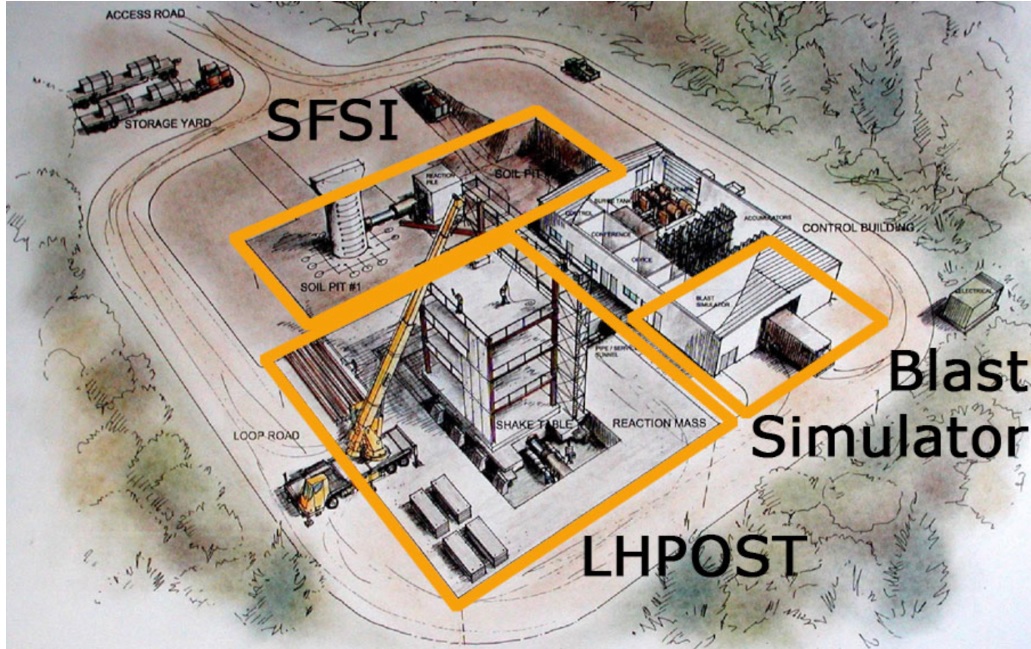The facilities at the the UC San Diego Englekirk Structural Engineering Center are being used to investigate structural and geotechnical performance issues related to the area of Critical Infrastructure Protection (CIP).

SHAKE TABLE
The LHPOST6 is the largest shake table facility in the United States and possesses the largest payload capacity (20 MN) globally. Our world-class, one-of-a-kind shake table facility is designed for the seismic testing of 3-D large- or full-scale structural, geotechnical, or soil-foundation-structural systems, with the capability to accurately reproduce far- and near-field multi-directional strong earthquake ground motions.
Under a grant from the NSF, the LHPOST6 is now capable of applying realistic earthquake motions with 6 degrees of freedom, including the three translational (back and forth, up and down, left to right) and three rotational (yaw, pitch and roll) ground motion components. Because it is located outdoors, it has no specimen height limitation.
LHPOST6 CAPABILITIES:
- Simulation of near-source earthquake ground motions which involve large acceleration, velocity and displacement pulses, including six ground motion components (three translational and three rotational).
- Seismic testing of extensively instrumented large-full-scale structural specimens under extreme earthquake loads at near real-world conditions
- Seismic testing of extensively instrumented large-scale geotechnical and soil-foundation-structural systems by using the shake table in combination with the large soil boxes.
- The advancement of innovative materials, manufacturing methods, detailing, earthquake protective systems, seismic retrofit methods, and construction methods.
- Education of graduate, undergraduate, and K-12 students from diverse backgrounds, as well as news media, policy makers, infrastructure owners, insurance and the general public, about natural disasters and the urgency of the nation’s efforts to develop effective technologies and policies to prevent these natural events from becoming societal disasters.
SOIL-FOUNDATION-STRUCTURE INTERACTION FACILITY (SFSI)
The Englekirk Structural Engineering Center includes the nation's largest facility for testing soil-structure reactions to earthquakes and other natural disasters, such as hurricanes. The facility, which is funded by the California Department of Transportation (Caltrans), includes a refillable soil pit, laminar soil shear box, and a moveable reaction wall. Soil can be placed in controlled conditions and removed after testing, which makes it relatively easy to examine structural elements below ground. The laminar soil shear box can be placed directly on the LHPOST6 and provides the capability for representing in-situ soil conditions for soil-structure interaction experiments.
BLAST SIMULATOR
UC San Diego and funding agency Technical Support Working Group (TSWG) have developed the world's first hydraulic-based simulator to simulate full scale explosive loads without the use of live explosive materials. The simulator can perform fully repeatable, controlled blast load simulations on critical structural elements such as columns, beams, girders, and walls, to characterize the progressive collapse of these structural components and systems when subject to local or short standoff distance charges. It can also be used to investigate the response of bridge components such as decks, piers, and towers to simulated short standoff explosive loads.